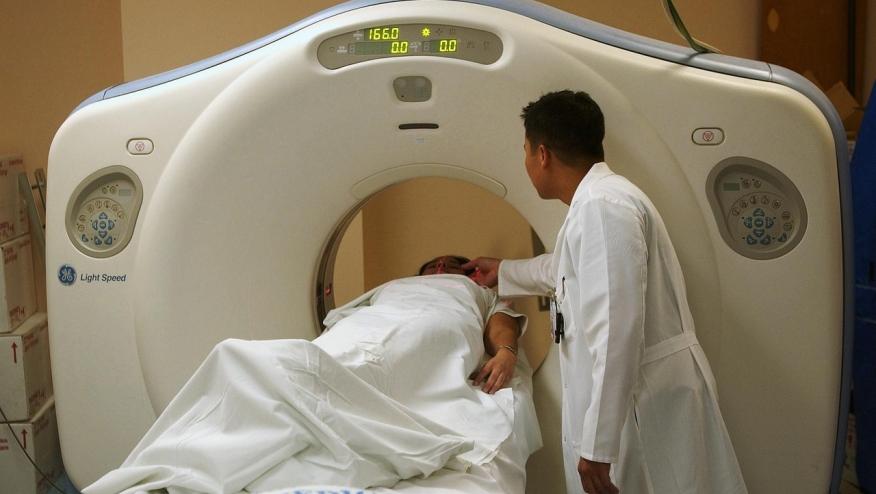SARD-ILD: Significant diagnostic and treatment delays Save

Should we be screening all our patients with systemic autoimmune rheumatic disease (SARD) for interstitial lung disease?
I have been asking myself that question after the recent publication of American Thoracic Society Interstitial Lung Disease (ILD) screening guidelines1. The ATS guidelines, which were published in May, recommend universal CT chest screening for all asymptomatic patients with rheumatoid arthritis, systemic sclerosis, idiopathic inflammatory myopathies, mixed connective tissue disease, and Sjögren’s disease. This recommendation for universal screening among SARD patients goes further than recent guidelines from the American College of Rheumatology2 and European League Against Rheumatism3, which advocate for screening patients with high-risk SARD subtypes or high-risk features in other SARDs like rheumatoid arthritis. Although my current practice aligns more with the risk-based approaches of the ACR and EULAR, the three recent screening guideline initiatives illustrate growing recognition of the importance of early diagnosis and treatment of SARD-ILD.
The unfortunate reality of SARD-ILD is that many patients present at a late stage, only after there has been sufficient lung damage to cause significant symptoms and trigger imaging assessment of the lungs. One recent study found that only a quarter of patients with symptomatic SARD-ILD received a CT chest scan within 90 days of symptom onset4 and many academic centers have adopted combined rheumatology-pulmonology clinic models5 to expedite evaluation and diagnosis of SARD-ILD.
The causes of SARD-ILD diagnostic delay are multifactorial. ILD symptoms, such as fatigue and dyspnea, are nonspecific. Physical examination findings, such as “Velcro” crackles on pulmonary auscultation, are insensitive, especially for subclinical disease. Rheumatologists may be focused on myriad other aspects of managing complex patients with multi-system disease rather than pulmonary manifestations. Implementing systematic screening of SARD patients, whether universal or risk factor-based, would certainly lead to increased detection of subclinical and early SARD-ILD. However, the cost of imaging, incidental findings, and exposure to ionizing radiation from CT scans remain important concerns when considering widespread screening of asymptomatic patients. Ultrasound-based screening, which does not involve ionizing radiation and can be deployed in clinic, and machine learning and artificial intelligence-based approaches to assist radiologist interpretation of CT scans, may be part of future SARD-ILD screening strategies.
The objective of a screening program is to save lives and healthcare dollars through early diagnosis and treatment. Early intervention with disease modifying therapy to prevent the accumulation of inflammatory damage remains an important goal for rheumatologists. The early detection of ILD in systemic sclerosis and Sjögren’s disease often results in treatment changes to target lung inflammation. For fibrotic forms of SARD-ILD, antifibrotic therapies, which have demonstrated reduced decline in pulmonary function tests, are an emerging treatment option. However, the impact of immunosuppressive and antifibrotic therapies in patients with early and subclinical SARD-ILD needs further study. Ultimately, establishing mortality and financial benefits to ILD screening in SARD patients will be the necessary justification of effective SARD-ILD screening. I am optimistic that increased attention on screening for SARD-ILD among both the pulmonology and rheumatology communities, as evidenced by multiple recent guidelines, will pave the way for future studies that generate this evidence.
References
- Podolanczuk, A. J., Hunninghake, G. M., Wilson, K. C., Khor, Y. H., Kheir, F., Pang, B., et al. (2025). Approach to the evaluation and management of interstitial lung abnormalities: An official American Thoracic Society clinical statement. American Journal of Respiratory and Critical Care Medicine, 211(7), 1132–1155. https://doi.org/10.1164/rccm.202505-1054ST
- Johnson, S. R., Bernstein, E. J., Bolster, M. B., Chung, J. H., Danoff, S. K., George, M. D., et al. (2024). 2023 American College of Rheumatology (ACR)/American College of Chest Physicians (CHEST) guideline for the screening and monitoring of interstitial lung disease in people with systemic autoimmune rheumatic diseases. Arthritis & Rheumatology, 76(8), 1201–1213. https://doi.org/10.1002/art.42860
- Antoniou, K. M., Distler, O., Gheorghiu, A. M., Moor, C. C., Vikse, J., Bizymi, N., et al. (2025). ERS/EULAR clinical practice guidelines for connective tissue diseases associated interstitial lung disease. Annals of the Rheumatic Diseases. Advance online publication. https://doi.org/10.1016/j.ard.2025.08.021
- Yang, J., Head, M. A., Schott, K. D., Tan, H., Djaraher, R., Crowe, C. L., et al. (2025). Real-world care patterns and specialist encounters of patients with systemic autoimmune rheumatic disease-related interstitial lung disease in the United States: A retrospective administrative claims database analysis. Rheumatology, 64(8), 4713–4721. https://doi.org/10.1093/rheumatology/keaf200
- Guler, S. A., Scheschkowski, T., Renner, A., Kämpf, L., Gasser, M., & Maurer, B. (2024). Interdisciplinary diagnosis and management of patients with interstitial lung disease and connective tissue disease. Chest, 166(2), 352–361. https://doi.org/10.1016/j.chest.2024.02.045










If you are a health practitioner, you may Login/Register to comment.
Due to the nature of these comment forums, only health practitioners are allowed to comment at this time.